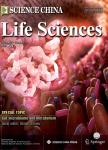Production of transgenic cashmere goat embryos expressing red fluorescent protein and containing IGF1 hair-follicle-cell specific expression cassette by somatic cell nuclear transfer
Production of transgenic cashmere goat embryos expressing red fluorescent protein and containing IGF1 hair-follicle-cell specific expression cassette by somatic cell nuclear transfer作者机构:Key Laboratory for Mammalian Reproductive Biology and Biotechnology Ministry of Education Inner Mongolia University
出 版 物:《Science China(Life Sciences)》 (中国科学(生命科学英文版))
年 卷 期:2009年第52卷第4期
页 面:390-397页
核心收录:
学科分类:0710[理学-生物学] 0830[工学-环境科学与工程(可授工学、理学、农学学位)] 07[理学] 08[工学] 09[农学] 071007[理学-遗传学] 0901[农学-作物学] 0836[工学-生物工程] 090102[农学-作物遗传育种]
基 金:Supported by the National High Technology Research and Development Program of China (Grant No. 2002AA242061) Natural Science Foundation of Inner Mongo-lia (Grant No. 200607010405)
主 题:cashmere goat insulin like growth factor 1 hair follicle fetal fibroblasts cells transgene somatic cell nuclear transfer
摘 要:In the present study, cashmere goat fetal fibroblasts were transfected with pCDsR-KI, a hair-follicle-cell specific expression vector for insulin-like growth factor 1 (IGF1) that contains two markers for selection (red fluorescent protein gene and neomycin resistant gene). The transgenic fibroblasts cell lines were obtained after G418 selection. Prior to the somatic cell nuclear transfer (SCNT), the maturation rate of caprine cumulus oocytes complexes (COCs) was optimized to an in vitro maturation time of 18 h. Parthenogenetic ooctyes were used as a model to investigate the effect of two activation methods, one with calcium ionophore IA23187 plus 6-DMAP and the other with ethanol plus 6-DMAP. The cleavage rates after 48 h were respectively 88.7% and 86.4%, with no significant difference (P0.05). There was no significant difference between the cleavage rate and the blastocyst rate in two different media (SO- Faa and CR1aa; 86.3% vs 83.9%, P0.05 and 23.1% vs 17.2%,P0.05). The fusion rate of a 190 V/mm group (62.4%) was significantly higher than 130 V/mm (32.8%) and 200 V/mm (42.9%), groups (P0.05). After transgenic somatic cell nuclear transfer (TSCNT) manipulation, 203 reconstructed embryos were obtained in which the cleavage rate after in vitro development (IVD) for 48 h was 79.3% (161/203). The blastocyst rate after IVD for 7 to 9 d was 15.3% (31/203). There were 17 embryos out of 31 strongly ex- pressing red fluorescence. Two of the red fluorescent blastocysts were randomly selected to identify transgene by polymerase chain reaction. Both were positive. These results showed that: (i) RFP and Neor genes were correctly expressed indicating that transgenic somatic cell lines and positive trans- genic embryos were obtained; (ii) one more selection at the blastocyst stage was necessary although the donor cells were transgenic positive, because only partially transgenic embryos expressing red fluorescence were obtained; and (iii) through TSCNT manipulation and optim



